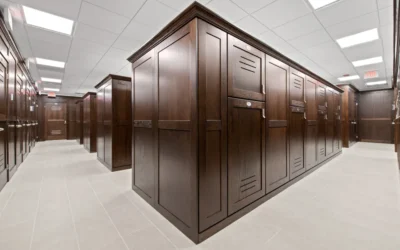If you look at where the self-storage development pipeline is gushing these days, you can see why some developers might be attracted to those markets while others might be repelled by them. It’s sort of a tale of two cities.
A report released recently by Yardi Matrix shows that as of April 30, 2018, Nashville, TN, had more self-storage facilities in the construction or planning stage as a share of existing supply — 27 percent — than any other major U.S. market. Next was Portland, OR (25 percent), followed by Boston, MA (23 percent), Denver, CO (21 percent), Raleigh-Durham, NC (17 percent), and Charlotte, NC (17 percent).
But in East Coast markets like New York City, NY; Washington, DC; and Philadelphia, PA, the share of facilities in the pipeline versus existing supply was lower. As of April 30, that share was 13 percent in New York, 10 percent in DC and 9 percent in Philadelphia, according to Yardi Matrix.
“At this point in the cycle, [sophisticated developers] are cautious about heavily supplied markets like Nashville, Charlotte and Portland,” said David Dent, senior analyst at Yardi Matrix, which specializes in commercial real estate research and data. “And they are more confident building in certain pockets of New York, Boston, Washington, DC, and Philadelphia, even though those markets are slower-growing.”
The “repricing” equation
So, what’s a self-storage developer to do? This is where the tale of two cities comes in.
Contrary to what the numbers might indicate, Dent said that Portland, for instance, might be a better long-term bet than the New York submarket of Brooklyn.
Dent’s reasoning goes like this: If you can lock down a desirable location to build a facility in the Portland market, you’ll likely be better off in the long run than if you were to build a facility in Brooklyn because the property will “reprice” faster in Portland than in Brooklyn.
By the same token, a more risk-averse developer understandably could be drawn to Brooklyn, considering the overflowing development pipeline in Portland versus the smaller pipeline in New York.
Eyes on Texas
In the meantime, self-storage developers are closely monitoring the major markets in Texas.
The Yardi Matrix report, published in May, shows completed inventory averaged 7.7 net rentable square feet (NRSF) per capita in San Antonio, TX; 7.8 NRSF in Dallas-Fort Worth, TX; 8.1 NRSF in Austin, TX; and 8.5 NRSF in Houston, TX.
By comparison, the national average was 5.5 NRSF per capita, the report says. Existing inventory ranged from 5 NRSF to 6 NRSF per capita in Denver, Nashville and Portland.
“For self-storage, Texas might be approaching full completed inventory levels for the current population in the state,” Dent said.
In response to that, new-supply pipelines in the major Texas metros are hovering around 5 percent of existing inventory, the Yardi Matrix report says.
Dent pointed out that once inventory approaches 8 NRSF per capita — as it has in Texas — operators begin to lose their ability to push rent increases.
Ups and downs in rents
The Yardi Matrix report indicates average rents for 10×10 units are facing headwinds, with a year-over-year decrease of 1.7 percent in April 2018 after growing as much as 5 percent in the early fall of 2017.
Bucking that trend were markets like Las Vegas, NV, and Phoenix, AZ. On a year-over-year basis, Las Vegas saw a 10 percent uptick in average rents for 10×10 climate-controlled and non-climate-controlled units, while Phoenix posted a 2 percent rise in rents for 10×10 climate-controlled units and 8 percent for 10×10 non-climate-controlled units.
In most other markets, the rent situation was less encouraging.
The Raleigh-Durham market witnessed a 12 percent year-over-year drop in April 2018 in average rents for a 10×10 climate-controlled unit and a 7 percent drop for a 10×10 non-climate-controlled unit.
Meanwhile, Denver posted 7 percent declines in both categories. Across the board, the four major Texas markets saw average 10×10 rents fall anywhere from 4 percent to 8 percent.
“Tail end” of the cycle?
All in all, given that year-over-year rents in April 2018 slid in about 60 percent of the markets tracked by Yardi Matrix and supply levels have been climbing in a number of markets, the self-storage market is teetering toward a decrease, as opposed to a continued increase, in total new supply, Dent said. He expects this development fall-off to begin later this year or early next year.
“It’s pretty clear that we are toward the tail end of the development cycle,” he said. “We’re at peak supply levels, and the places of opportunity are going to be more idiosyncratic in certain submarkets and in some of the historically underdeveloped major metros of the U.S. such as Philadelphia and New York.”
On a positive note, Dent added: “Even though interest rates are up and the economy is slowing, the reality is that the new-supply pressure is going to abate very quickly within commercial real estate — especially for storage, because it’s a pretty short development cycle.”







